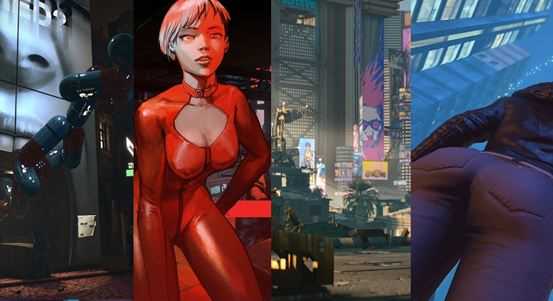Fans of Star Wars can rejoice as someone in a galaxy far far away thought of the idea of fusing Kinect’s hands free gaming with LucasArts’ beloved franchise. Star Wars has always been a bit of a camp fest and not really meant to be taken too seriously what with larger than life rogues such as Han Solo, the walking carpet Chewie and let’s not forget the sister snogging Jedi and farm boy Luke Skywalker. Even the movies villains like Darth Vader and the emperor scream pantomime and yet, via the celluloid they rest on manage to captivate audience young and old into their fantasy worlds. For any serious Star Wars fanatic who takes the story literally, Kinect Star Wars (KSW) is perhaps another of many nails in the coffin for the franchise, as the theme and its characters have since been butchered and ad placed beyond recognition. That said, if you’re going to rip the franchise apart further, then KSW is certainly as good a place as any to do so.
So, onto the game which comes in several modes of play including a story which focuses on events prior to episode IV and introduces new Jedi characters into the fold. There’s a duel mode where players can face off one on one against an AI opponent. Podracing which as the name suggests has you racing for pole position across many circuits, all the while following a pseudo storyline. Rancor Rampage which is like a 3D version of Ramapage from the arcades, although this time you’re tearing things up alone. Lastly, there’s a Dance Central style dance mode which tilts more towards the campiness than any other offering on the disc.
To begin, the most obvious starting point is the Jedi Destiny: Dark Side Rising mode which is effectively the story mode pitting you against lots of varied enemies and placing players in various familiar scenes and locations. It’s here where, as an unknown padawan (of which there are several skins to choose from) you can wield a lightsaber and start kicking ass. There are three main “worlds” on offer with each being broken down into sub missions, and what you’ll find is each mission thrusts players into different scenarios. One moment you’ll be using the force to push enemies away before slicing them apart with your lightsaber, the next, riding a speeder bike through the wookie forests of Kashyyyk.
The biggest concern with the gameplay here is not its on rails simplicity or its repetitive actions but more how well Kinect works. This is a tough area to review simply because calibration is key to success and what might work well for one person might not for another; there’s also varying light conditions which can also affect how well Kinect detects the player – ultimately it’s Kinect’s failing more than the game that comes into question. From personal experience, Kinect does a grand job of picking up players, and what’s neat aside from slicing and dicing actions with your hands is the way you interact via various movements such as jumping and side stepping. The sword play in particular is as involving as you have imagination. Sure, you can idly flail or swing your arms in a sullen fashion, whereas adding a bit of character,style and finesse to moves also seems to work just as well. There’s timing and premonition to some of the moves, and when enemies become tougher, you’ve got to side step and counter-attack or jump and rain hell on them from above. There are some interesting moves on offer and when combined with the limited forces powers, makes for some varied combat scenarios that are a joy to play.
It’s easy to see how the whole experience can be marred by a lack of enthusiasm or Kinect not working properly, but then again, making sure the conditions are right is a must with this game. This can’t be stressed enough as the biggest killer to this game is a lack of precision when things go bad simply due to Kinect now picking up the player.
The Jedi Destiny Mode offers lots of variety and interesting uses of Kinect that keep things from getting stale, although fairly short in terms of conventional gaming, some sections do tend to drag on a bit and can be tiring depending on the energy levels of the player.
Next up is the Duels of Fate mode, which we’ll talk about briefly here as its core mechanics are featured in the Jedi Destiny story. Basically it’s one versus one with very limited lateral movement. The idea is go to and fro from attack to defence moves in a see saw type presentation. The AI either attacks from one of four directions, you block or side step, then once a meter is filled you attack. At first glance this mode seems a bit dull and in comparison to the Jedi Destiny full on madness, it perhaps is. However, once you’ve learned how to flawlessly evade hits, use the force to grab inanimate objects as weapons, and take out the opponents quickly it all becomes clearer. It’s a time attack mode set against local and online leaderboards. Sadly there’s not two player option or online to have made this a bit more entertaining.
The Podracing mode is a little story unto itself and introduces players to familiar characters from the movies as you enter the fray as an unknown and work your way up the ranks. There’s a solid racer on offer here with plenty of moves, upgrades and tight controls. There’s options to tailor driving assists, and when all are off you’ve got a game which offers some compelling – yet tiring on the arms – racing. For me at least, after a few races in one session, I was done despite the brain wanting to carry on a bit more – this speaks more about my levels of fitness than anything. That said, the podracing takes place across some varies circuits, has some neat opponents and podium arm waving, and is very different to the other modes on offer, even down to how the controls work by moving left or right arms forwards and backwards to turn.
Rancor Rampage is a fun mode which offers pure carnage against a time limit where your smashing things up like Mos Eisley and its inhabitants. Think GTA or Saints Row rampage modes and you get the idea. The Rancor can smash into buildings, slap attack and charge into things as well as jump high and squash anyone below. It’s a simplistic offering set with challenges to complete to boost ones score. The idea is to keep playing levels to upgrade and unlock more content. Sadly I found this the least responsive in terms of Kinect picking up my movements. Things like grabbing droids and people running around was difficult, and the actual movement a bit clunky. That said, for a bit of mindless action, this is definitely the mode to turn to, although once again, can get tiring after a few sessions. If you’re feeling brave, the scores can be compared to local and online leaderboards which is a nice touch.
Galactic Dance Off is the campy dancing game which offers a comprehensive dance mode that is easily comparable with some of Kinect’s other offerings such as Dance Central. The theme is candid and this is conveyed with the music and the characterisations. Admittedly, this is the mode I spent the least time with, but as a side bit of tongue in cheek fun I can see how this would be favourable when more players are present. On the whole, the kinect works well, but there’s quite a bit of leniency with moves to accommodate most players.
KSW is wrapped up with some neat presentation that might not offer the most detailed textures but is set within an animated look and realism. It works, and whilst there’s no obvious faults, the looks offer expected moments and familiar scenes and faces for fans. The menus are easy to use and can be voice activated or navigated using hand gestures which is a nice touch. For the 3D TV owning crowd there’s some cool effects on offer, but quite a bit of degradation, and in general, even in 2D the game is quite dark and needs some brightness adjustment.
The audio is reasonable, offering the sounds you’d expect from a Star Wars game, although don’t be expecting Oscar winning performances from the cast. It’s best to describe the audio as fully functional rather than mind-blowing, although it has to be said, the use of the original John Williams score is commendable.
KSW as a sum of its parts offers some great value for money, although the reality is the length of time one can play is directly determined by fitness levels. The game might not be as physically demanding as some other Kinect offerings, but is still going to sap away energy no matter what mode you’re tackling. In general though when adding up the potential hours, there enough here for lone and multiple players to have a blast, and with the leaderboards and party aspects makes for a game that can be replayed more than once.
In closing, Kinect Star Wars is a fun piece of software for the Kinect device and one that’s probably the most fun as it uses a familiar licence with such gusto. Despite some minor niggles and ignoring what perhaps could have been, what’s on offer seems in keeping with the other Kinect titles for the system and therefore comes highly recommended if you’re into Kinect style gaming. This one though has Star Wars all over it and in many ways this in itself makes it more appealing. From fun sword swinging, to dancing and high speed racing, KSW offers a varied package that’s well suited to its target audience and anyone else as long as you can remove any shackles of expectation. Kinect Star Wars is the most accomplished Kinect Game to date, could be improved in some areas, but on the whole was worth waiting for and does what it sets out to do.
7/10




